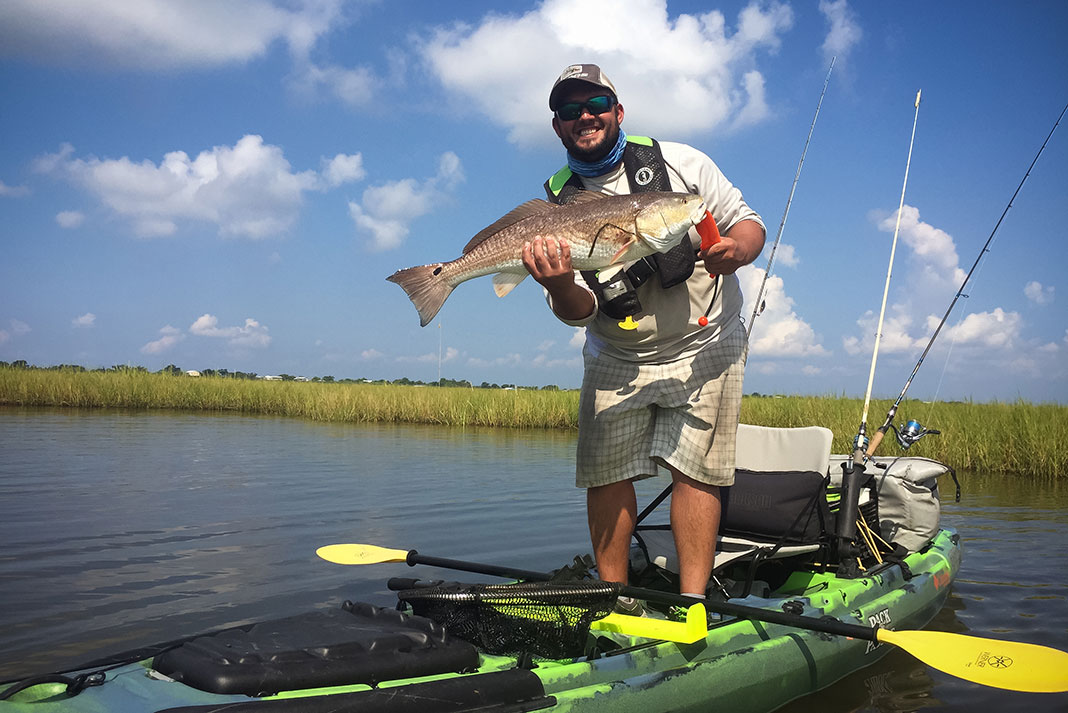Products You May Like
Kayak fishing in the United States is a nationwide phenomenon with dedicated anglers in every corner of the country. We asked experts in every state if they had one day to fish, where would they go, when, what would they target and how would they fish? The responses uncover the top fishing grounds of the best anglers. Whether you’re traveling through Okefenokee, Coeur d’Alene, Messalonskee, Pascagoula, Big Tallapoosa or Little Tallapoosa, you’ll know where to catch the best fishing.
[This article is Part II of our United States of Fishing series. For more of the hottest hot spots nationwide, see Part I and Part III.]
The United States of Fishing, Part II
Louisiana
Guide: Eli Braud
Hot spot: Port Aux Chenes to sight cast for redfish
Season: October to December. In summer, I start before dawn and prepare to be on the water for six to eight hours. The rest of the year, when the weather isn’t as hot, I can fish longer.
Tactic: PAC Kayak Rentals is the heart of fishing for me. For redfish, I start the day casting a topwater lure along the shoreline. Once the sun comes up, I go into sight-fishing mode. I’m looking for clean water, even better if there is underwater vegetation. Cast the lure a few feet ahead of the redfish and intersect the fish’s path. If done correctly, the red will attack the lure and you’ll hold on for a Cajun sleighride.
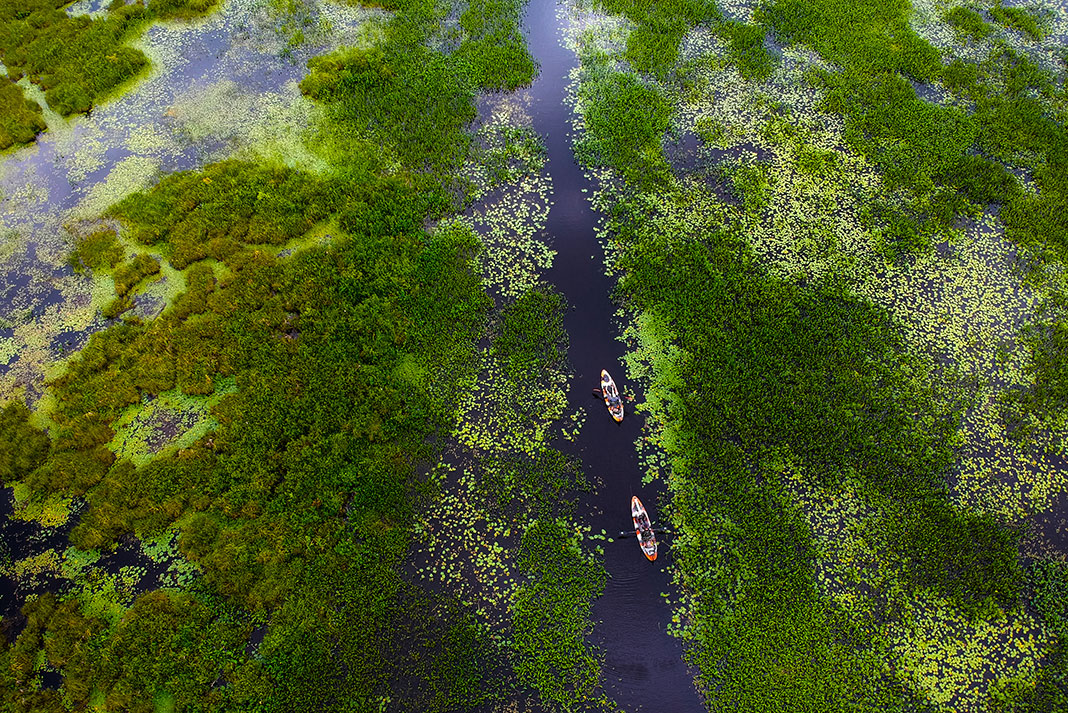
Maine
Guide: Matt Charette
Hot spot: Messalonskee Lake in the Belgrade chain for largemouth, smallmouth and pike.
Season: Spring or fall. The weather can turn quickly. Best luck is early in the morning or stay late.
Tactic: The real money is usually on a white spinnerbait or Chatterbait rolled over structure or through isolated grass patches. Smallies on Messalonskee relate to boulders. Largemouth and pike hang in the milfoil and isolated grass.
Fish Story
At last year’s EKF Messalonskee and Great Pond tournament, almost everyone caught a limit. I hooked into what I am convinced would have been the state record pike. While I was fumbling with my net, she made one more run and broke me off.
Maryland
Guide: John Veil, author of The Way I like to Fish—A Kayak Angler’s Guide to Light Tackle, Shallow Water Fishing
Hot spot: Middle Chesapeake Bay creeks and bays for striped bass
Season: May to October. I prefer high water when I can get closer to the shoreline. Moving current is a plus. I love to find a clear rip line coming off a point. Reduced light in early mornings and overcast days helps.
Tactic: Troll a three- to four-inch paddle tail on a 1/8- to 1/4-ounce jighead back and forth along the shoreline staying within my target depth zone. I like to pass points that jut into the current. When I catch a fish, I mark a waypoint.
Massachusetts
Guide: Eric Harrison, Hobie pro, Kokatat ambassador
Hot spot: Boston for striped bass
Season: May to October, the biggest fish peak from June to August. Daytime fishing can be good, but the night fishing is spectacular. Big fish often come in close at night and are less wary and much more likely to hit artificials.
Tactic: Troll a tube and worm, soft-plastic jig or hard bait like a Daiwa SP minnow. My favorite is fishing soft-plastic jigs. During the day, I fish bright colors using six- to nine-inch tails. At night I bump up to nine- to 14-inch lures in dark colors. It is hard to beat feeling the smash of a big fish on a big plastic.
Michigan
Guide: Mike McKinstry
Hot spot: Lake St. Clair for trophy smallmouth bass
Season: In the spring, look for a calm day with low wind. Heavy winds can quickly turn the lake into a rodeo ride.
Tactic: The lake has an average depth of 10 feet and very little vegetation. To find schools of smallmouth bass, cover a lot of water with a dark colored tube. This lure will also attract attention from walleye, muskie, perch and trophy rock bass. The water is clear so make sure your lure is natural color and appearance.
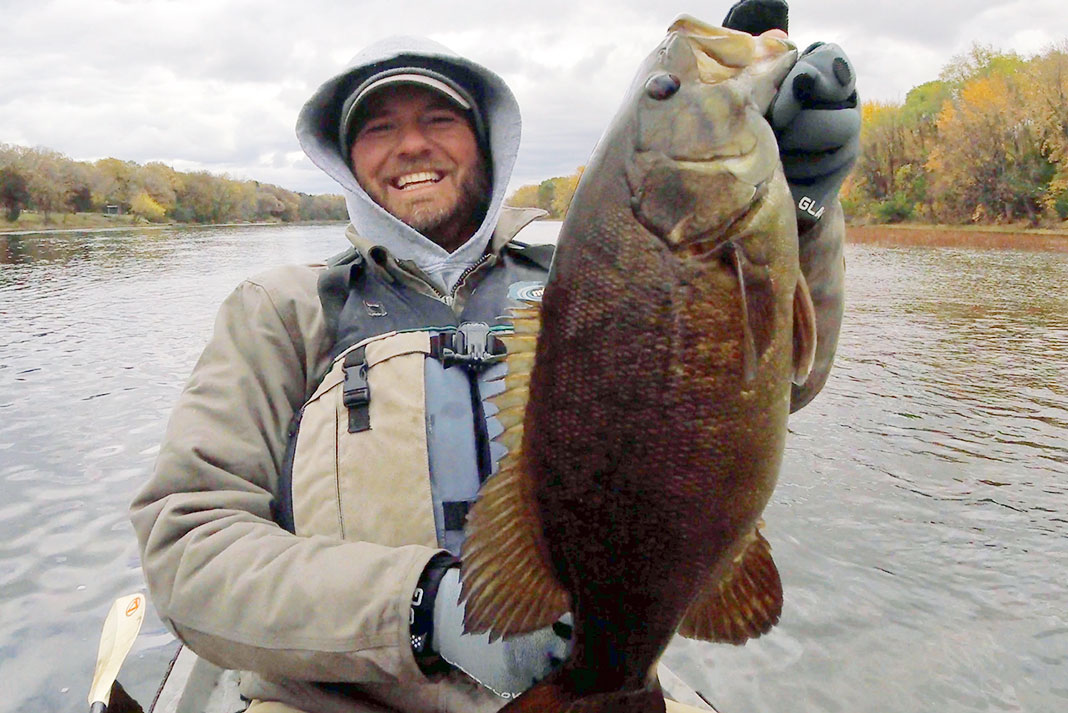
Minnesota
Guide: Greg Underdahl, Clear Waters Outfitters, Angling Unlimited YouTube
Hot spot: Mississippi River from St. Cloud to Monticello
Season: Late fall smallmouth are heavy and they group up in areas with little current. Look for temperatures above freezing and little to no wind.
Tactic: This stretch is well known for an abundance of big smallmouth bass. Nearly every conceivable smallmouth habitat is present including rock, boulders, sand bars, riffles, deep holes and lay-down logs. In the summer, the best technique is to target lay-down logs with buzzbaits and jigs. In the fall and into winter, find slack water and drag a Texas-rigged tube.
Fish Story
One of the best fishing days was cold and rainy and I had very little confidence fishing was going to be good. I proceeded to hook smallmouth after smallmouth in the three- to four-pound class. It was like shooting fish in a barrel.
Mississippi
Guide: Jeff Jones, host of Brackish Coast and Brackish Fly YouTube channel and podcast
Hot spot: Pascagoula River Marsh for redfish, speckled trout and largemouth bass
Season: The magical time of year starts in September and ends in April. On the coldest days, the fish hold in deep water until the sun warms the flats.
Tactic: Pascagoula River and Singing River flow parallel for four miles. The area between is full of marsh grass mazes and creeks creating ideal habitat for predator fish. The fish hang out on the down-current side of points, humps and mounds. Look for reds, trout or bass anywhere tidal current pulls baitfish or shrimp out of the marsh grass. Use topwater lures such as Rapala Skitterwalks, suspending twitchbaits like the MirrOlure Mirrodine and 1/8- to 1/4-ounce jigheads with a soft-plastic tail.
Missouri
Guide: Jay Harman, FeelFree pro staff
Hot spot: Lake of the Ozarks for crappie
Season: Spring spawn and overcast skies.
Tactic: Working a small tube jig along the bank.
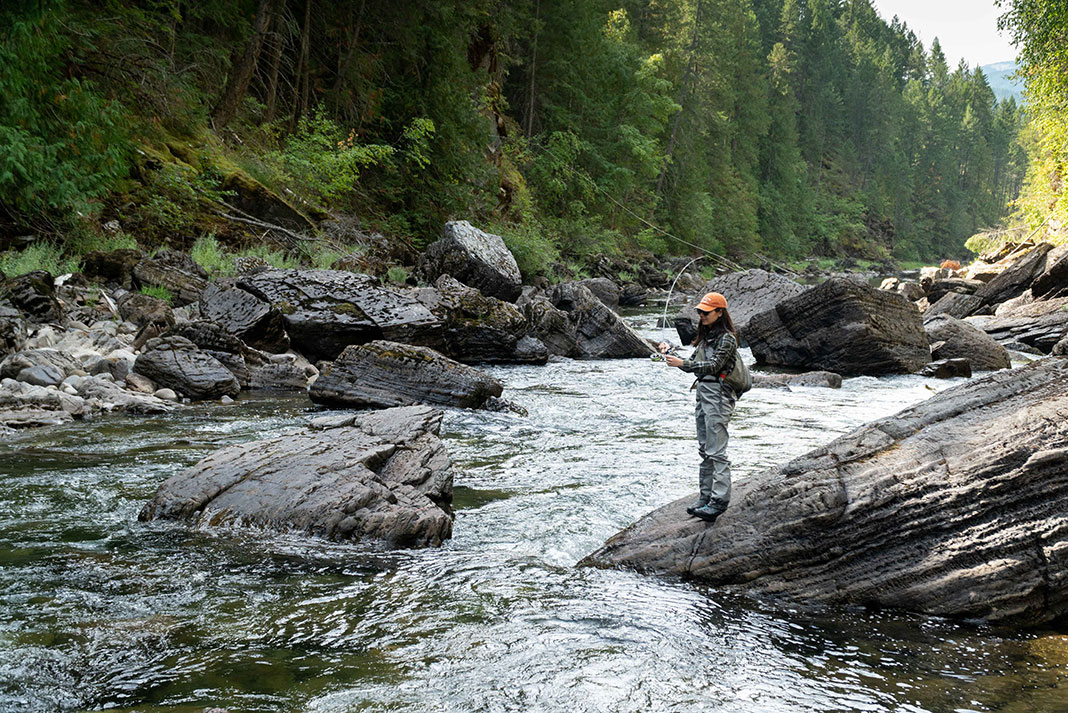
Montana
Guide: Marc Fryt, outdoor writer
Hot spot: Kootenai River for westslope cutthroat and redband rainbow trout
Season: Early summer through mid fall. Early morning and late afternoon on an overcast, drizzly day can fire-up summer insects and hungry trout.
Tactic: The Kootenai is a large river that can feel overwhelming. Casting towards the bank is effective but the center of the river gets overlooked. Break the river down into smaller sections and pick apart the water near the boat. Search for seams of constricting current, deeper channels and slower currents.
Fish Story
My wife and I were back at the campground after a morning rafting down the river, but we decided the day was not quite done. We packed our lunches and headed into a nearby canyon for mountain stream fishing. We spent the rest of the afternoon catching wily mountain trout without seeing another angler. Hundreds of creeks and small rivers drain into the Kootenai River offering a way to escape the crowd and explore the wild Montana experience.
Nebraska
Guide: Marty Hughes, pro guide, owner Kayakjak’s Outfitters
Hot spot: Southwest reservoirs for largemouth, hybrid striped bass, walleye and trout
Season: Spring and fall. Brisk south winds give anglers fishing the north shorelines the opportunity to catch fish.
Tactic: Stalk the laydowns and submerged tree stumps or areas with vegetation. Fish the main points and submerged humps. The best tactics for bass include topwater presentations, crankbaits, spinnerbaits and finesse soft-plastics.
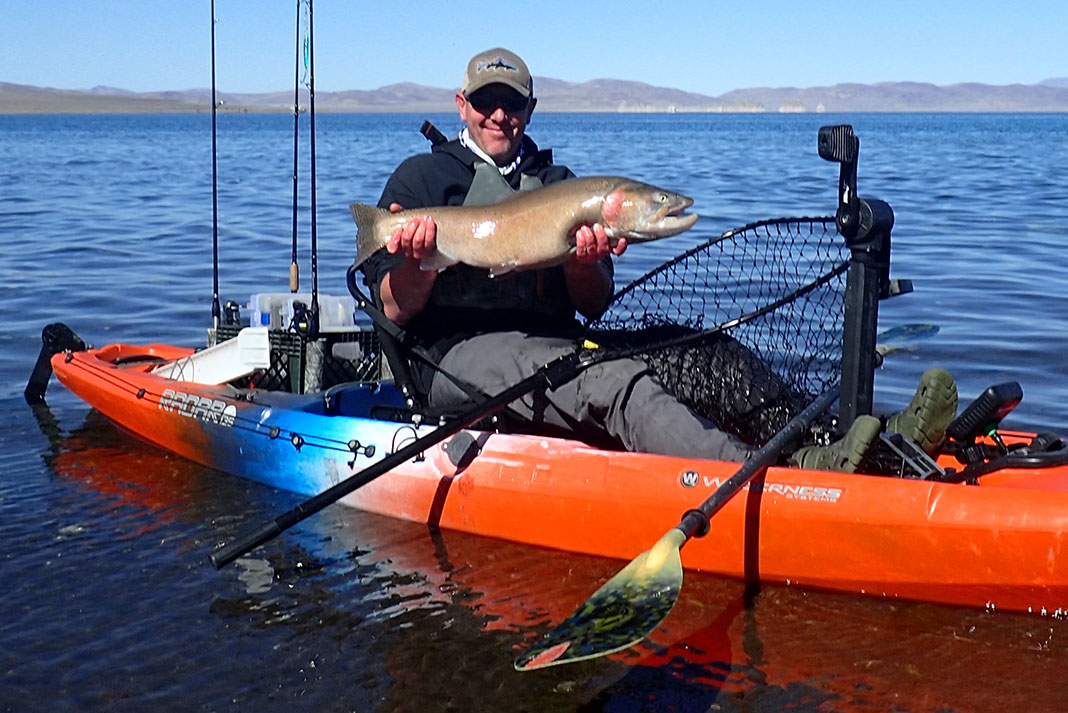
Nevada
Guide: Kevin Hofer, pro angler and Kayak Angler contributor
Hot spot: Pyramid Lake for cutthroat trout
Season: Summer. Watch out for high winds and big waves.
Tactic: Trolling a Lucky Craft Pointer with lead core line and 50 feet of 10-pound Pline fluorocarbon tippet. When I see a big mark on the fish finder, I jig a three-ounce Pline Laser Minnow. When I find the fish schooled up, I toss out a marabou jig.
Fish Story
On a recent camping trip with novice kayak angler Caitlin Williams, we woke up to a beautiful desert sunrise and a very calm lake. The forecast called for low winds all day, but the weather went from flat calm to two-foot waves and wind gusting to 17 miles per hour. Caitlin is a trooper and excited to catch her first trout so we kept trolling despite waves breaking over the bow and thoroughly soaking us. A few missed bites and then the line starts screaming from Caitlin’s reel. Heart pounding, adrenaline pumping, hands shaking, she gets the fish into the net. I loved her look of elation at her 12-pound trophy trout.
New Hampshire
Guide: Pat Gallagher
Hot spot: Lakes region for landlocked salmon
Season: Early spring for the smelt spawn and fall for the migration. Spring ice out concentrates the fish near shore.
Tactic: Trolling lead core line and nine feet of six-pound fluorocarbon leader or casting Tasmanian Devil, Rapala Countdown and Yo-Zuri Pins Minnows.
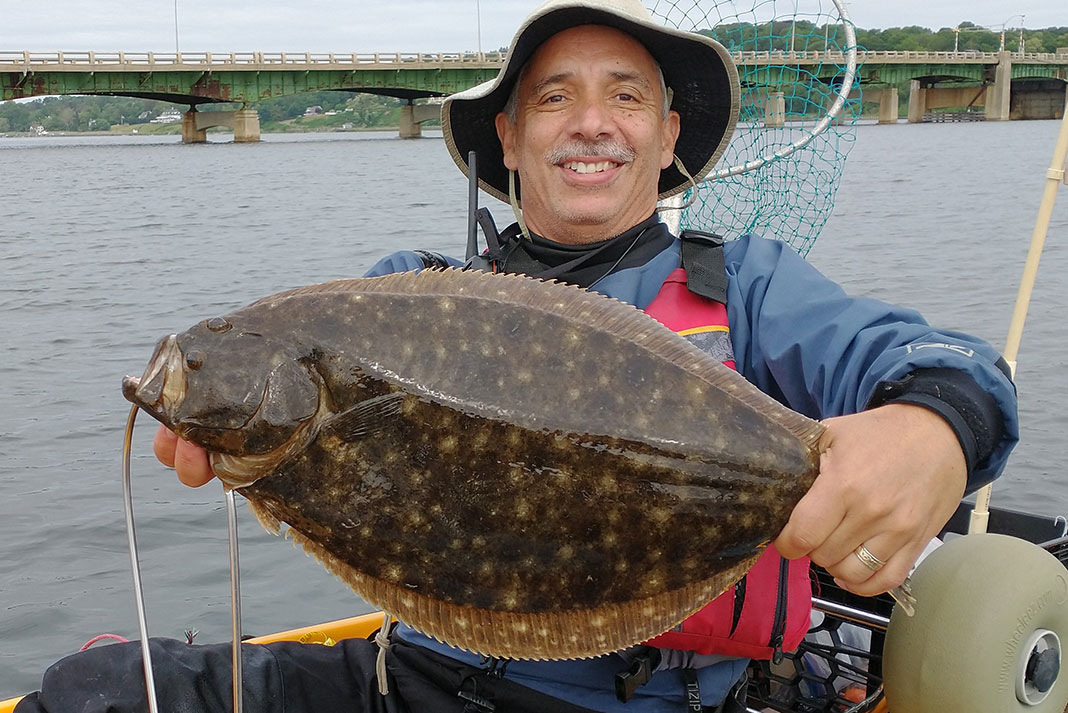
New Jersey
Guide: Dennis Suler, outdoor writer
Hot spot: Raritan Bay for striped bass and flounder.
Season: Fall and spring.
Tactic: Striped bass can be anywhere from the flats to the deep channels to the tip of Sandy Hook. In the early spring and later in the fall, large striped bass inhabit the flats and back sections of the bay. As the waters warm, smaller stripers will hold on the flats around structure while the larger fish concentrate in deeper channels. Troll large profile swimming plugs such as seven-inch Bombers. Tube and worm rigs work well before the water temperatures hit 70 degrees. To catch summer flounder, work a jig or dropper rig on the flats or around the deeper holes and structure. Sweeten the lure with a Gulp! grub to call in the flatties.
New Mexico
Guide: Philip Gonzales, director of Eastern New Mexico Kayak Fishing
Hot spot: Santa Rosa Lake for largemouth and smallmouth bass
Season: Late April through May.
Tactic: Casting a stickbait or creature bait into downed trees and stumps. Topwater with buzzbaits and Pop-R lures.
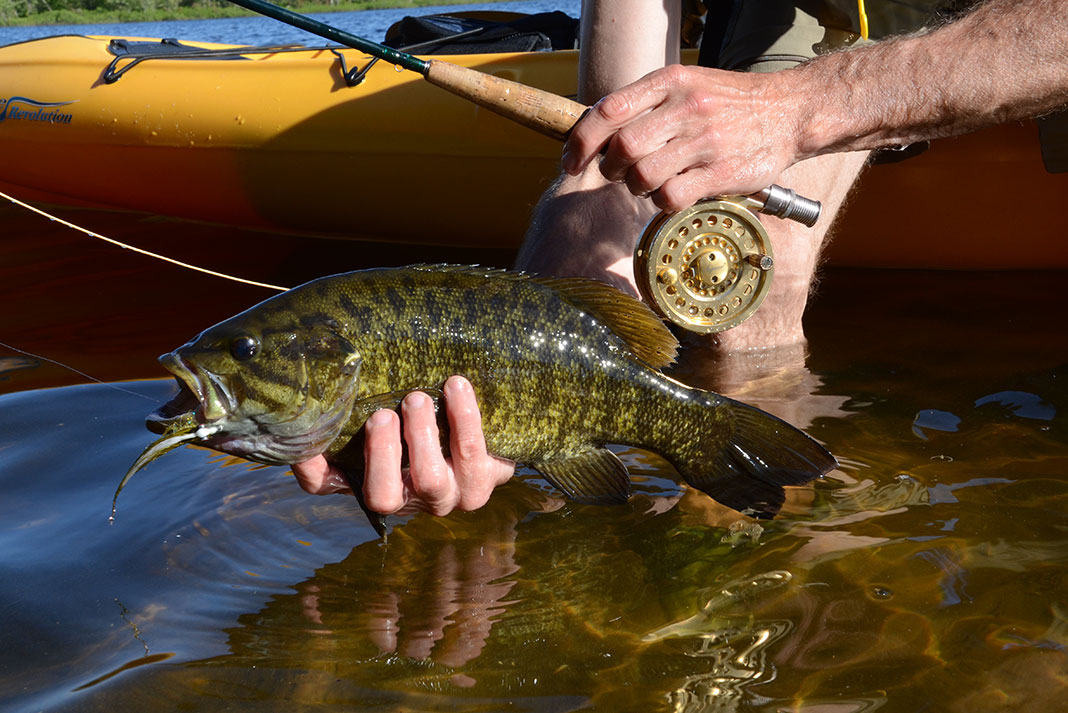
New York
Guide: Lisa Ballard, outdoor writer and Emmy-award winning host of Wildlife Journal on PBS.
Hot spot: Saranac Lake fly fishing for largemouth and smallmouth bass
Season: Early spring after the run-off to early summer before the water gets too hot. Look for cool, clear water.
Tactic: The best section of the river is primarily Class I with dark water due to a high tannin load. Cast along the river grass or toward overhanging riverbanks. Use a bead-head leech pattern like a wooly bugger at the end of a sink-tip line. Let the fly sink before stripping it back to the kayak.
Fish Story
My husband Jack is also a writer and photographer. We have a family pact: if one of us catches a fish the other takes a photo for the magazines. The first trip floating the Saranac, I spotted a bald eagle just as Jack hooked into a sizable bass. I grabbed my camera and clicked off frames of the eagle. Jack, who lives in Montana where eagles are plentiful, shouted at me, “Forget the damn eagle. I’ve got a fish on!” The strong bass pulled him to the far shore. I had our only net and rushed to assist. Jack shouted, “If it gets away, I don’t have an article!” The fish broke off into the net. Jack hoisted the five-pound smallie for a few pictures. In the end, I got the shot of the eagle and the bass, Jack got his article and we both had a fish story to tell.
This article was first published in the Early Summer 2022 issue of Kayak Angler Magazine. Subscribe to Kayak Angler Magazine’s print and digital editions, or browse the archives.
Louisiana sight seeing. | Feature photo: Eli Braud
